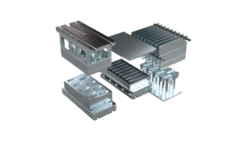2D Echo Procedure
Two-dimensional echocardiography, also known as 2D echo or cardiac ultrasound, is a non-invasive diagnostic procedure that uses sound waves to produce images of the heart.
This imaging technique is used to visualize the structure, size, and function of the heart, as well as to diagnose and monitor various cardiac conditions. In this article, we will discuss the 2D echo procedure, its uses, and what to expect during the examination.
Procedure:
Before the 2D echo procedure, the patient is usually asked to change into a hospital gown and lie on an examination table. A technician or a sonographer will then apply a gel-like substance to the chest and use a transducer, a handheld device that emits sound waves, to capture images of the heart.
The transducer is placed on different areas of the chest to obtain various views of the heart. The technician or sonographer may also ask the patient to change positions or take deep breaths to capture certain images. The entire procedure usually takes around 30 minutes to an hour, depending on the complexity of the examination.
Uses:
2D echo is a valuable tool for diagnosing and monitoring various cardiac conditions, including:
Heart valve disease:
The procedure can detect problems with the heart’s valves, such as stenosis or regurgitation.
Congenital heart disease:
2D echo can be used to diagnose congenital heart defects in infants and children.
Cardiomyopathy:
The procedure can help diagnose and monitor the progression of this disease, which affects the heart muscle.
Heart failure:
2D echo can assess the heart’s ability to pump blood and monitor the condition of the heart.
Pericardial disease:
The procedure can detect inflammation or fluid buildup in the pericardium, the sac that surrounds the heart.
Endocarditis:
2D echo can help diagnose and monitor infections of the heart’s lining and valves.
Aortic aneurysm:
The procedure can detect the enlargement of the aorta, the body’s main artery, which can lead to serious complications.
Hypertrophic cardiomyopathy:
The procedure can detect the thickening of the heart muscle, which can lead to heart failure or sudden cardiac death.
What to expect:
During the 2D echo procedure, the patient may feel pressure or mild discomfort from the transducer on their chest. The gel used during the procedure may also feel cold, but it is non-toxic and easily wiped off after the examination.
Patients do not require any special preparation for the procedure, although they may be asked to fast for a few hours beforehand if they are having an echocardiogram with contrast.
After the procedure, patients can resume their normal activities and usually do not require any special care. The results of the examination are usually available within a few days and will be discussed with the patient by their healthcare provider.
Frequently Asked Questions:
Is the 2D echo procedure safe?
Yes, 2D echo is a safe and non-invasive procedure. It does not involve radiation exposure, and there are no known risks or side effects associated with the examination.
How should I prepare for a 2D echo?
There is no specific preparation required for a 2D echo. However, patients may be asked to fast for a few hours beforehand if they are having an echocardiogram with contrast.
Will the procedure be painful?
No, the 2D echo procedure is not painful. Patients may feel pressure or mild discomfort from the transducer on their chest, but this is usually not significant.
How long does the procedure take?
The 2D echo procedure usually takes around 30 minutes to an hour, depending on the complexity of the examination.
Will I need to undress for the procedure?
Patients may be asked to change into a hospital gown for the procedure, but they do not need to undress completely. The technician or sonographer will apply the gel and use the transducer on the chest area only.
Can I eat or drink before the procedure?
Patients may eat and drink as normal before the procedure, unless they are having an echocardiogram with contrast, in which case they may be asked to fast for a few hours beforehand.
Can I have a 2D echo if I am pregnant?
Yes, 2D echo is safe for pregnant women and is often used to monitor fetal development and detect any cardiac abnormalities in the fetus.
How accurate is the 2D echo procedure?
2D echo is a highly accurate diagnostic tool for detecting and monitoring various cardiac conditions. However, the accuracy of the results may depend on the skill and experience of the technician or sonographer performing the procedure.
Will I receive the results of the examination immediately?
No, the results of the 2D echo examination are usually available within a few days and will be discussed with the patient by their healthcare provider.
Can the 2D echo procedure be used to diagnose all types of cardiac conditions?
No, the 2D echo procedure is not suitable for diagnosing all types of cardiac conditions. In some cases, additional diagnostic tests, such as a cardiac catheterization or MRI, may be necessary to make an accurate diagnosis.



